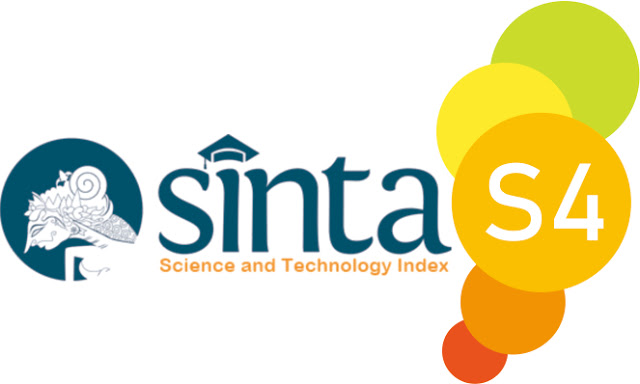Application of Deep Learning Algorithm to Detect Fraud in Online Transaction Networks
Abstract
Online transaction fraud is a severe problem that may cost businesses and people a lot of money. This paper suggests using deep learning algorithms to detect fraud as a remedy to this issue. These algorithms were chosen based on their ability to handle large amounts of intricate data and identify patterns that are difficult to identify using traditional techniques. Important components of this research include gathering and preprocessing transaction data, creating deep learning models, and assessing model performance. This investigation examines a variety of financial transaction types that may have involved fraud. The deep learning approach uses deep neural network designs, including Long Short-Term Memory (LSTM) and Convolutional Neural Networks (CNN), to maximize detection accuracy. The study's findings demonstrate that the deep learning models created are excellent at identifying questionable transactions and can lower the false positive rate, which raises the overall effectiveness of fraud detection systems. As a result, deep learning algorithms have demonstrated a high degree of efficacy in identifying fraudulent activity inside internet-based transaction networks, so they play a vital role in fraud prevention.
Downloads
References
F. Zamachsari, N. P.-S. dan T. Informasi), and undefined 2021, “Penerapan Deep Learning dalam Deteksi Penipuan Transaksi Keuangan Secara Elektronik,” jurnal.iaii.or.idF Zamachsari, N PuspitasariJurnal RESTI (Rekayasa Sistem dan Teknologi Informasi), 2021•jurnal.iaii.or.id, Accessed: Nov. 11, 2024. [Online]. Available: https://jurnal.iaii.or.id/index.php/RESTI/article/view/2952
E. Waty, I. Sulistiana, E. Siskawati, L. Judijanto, and I. Maghfur, AKUNTANSI DIGITAL: Transformasi pembukuan di era revolusi industri 4.0 menuju society 5.0. 2023. Accessed: Nov. 11, 2024. [Online]. Available: https://books.google.com/books?hl=en&lr=&id=b43pEAAAQBAJ&oi=fnd&pg=PA16&dq=+Penerapan+LSTM+dalam+Mendeteksi+Penipuan+Transaksi+Perbankan.+Jurnal+Teknik+Informatika+dan+Sistem+Informasi,+8(2),+34-48.&ots=gyid7wL8TO&sig=QNOoA7WHAzVs4-sEuc4SBrC8vNw
E. S. Budi, A. N. Chan, P. P. Alda, and Muh. A. F. Idris, “Optimasi Model Machine Learning untuk Klasifikasi dan Prediksi Citra Menggunakan Algoritma Convolutional Neural Network,” Resolusi : Rekayasa Teknik Informatika dan Informasi, vol. 4, no. 5, pp. 502–509, May 2024, doi: 10.30865/RESOLUSI.V4I5.1892.
R. P.-J. D. Data and undefined 2024, “PENERAPAN MACHINE LEARNING DALAM DETEKSI KECURANGAN PADA TRANSAKSI KEUANGAN ONLINE,” pustakailmu.idRA PutraJurnal Dunia Data, 2024•pustakailmu.id, Accessed: Nov. 11, 2024. [Online]. Available: http://www.pustakailmu.id/index.php/duniadata/article/view/87
B. Tarissa, T. D.-D. J. of Accounting, and undefined 2024, “PENERAPAN MACHINE LEARNING DAN DEEP LEARNING PADA PENINGKATAN DETEKSI CREDIT CARD FRAUD-A SYSTEMATIC LITERATURE REVIEW,” ejournal3.undip.ac.id, Accessed: Nov. 11, 2024. [Online]. Available: https://ejournal3.undip.ac.id/index.php/accounting/article/view/46092
L. Mahya, T. Tarjo, … Z. S.-J. R. A., and undefined 2023, “Intelligent Automation Of Fraud Detection And Investigation: A Bibliometric Analysis Approach,” ejournal.umm.ac.id, Accessed: Nov. 11, 2024. [Online]. Available: https://ejournal.umm.ac.id/index.php/jrak/article/view/28487
F. Zamachsari and N. Puspitasari, “Penerapan Deep Learning dalam Deteksi Penipuan Transaksi Keuangan Secara Elektronik,” Jurnal RESTI (Rekayasa Sistem dan Teknologi Informasi), vol. 5, no. 2, pp. 203–212, Apr. 2021, doi: 10.29207/RESTI.V5I2.2952.
R. P.-J. D. Data and undefined 2024, “PENERAPAN MACHINE LEARNING DALAM DETEKSI KECURANGAN PADA TRANSAKSI KEUANGAN ONLINE,” pustakailmu.id, Accessed: Nov. 11, 2024. [Online]. Available: http://www.pustakailmu.id/index.php/duniadata/article/view/87
S. Prasetyo, T. D.-D. J. of Accounting, and undefined 2024, “Penerapan Machine Learning, Deep Learning, Dan Data Mining Dalam Deteksi Kecurangan Laporan Keuangan-A Systematic Literature Review,” ejournal3.undip.ac.id, Accessed: Nov. 11, 2024. [Online]. Available: https://ejournal3.undip.ac.id/index.php/accounting/article/view/46146
U. Kolbia, N. D.-J. I. Informatika, and undefined 2024, “ANALISIS KECURANGAN DALAM MENGHADAPI PENIPUAN DI SITUS E-COMMERCE MENGGUNAKAN RANDOM FOREST; PENDEKATAN MACHINE LEARNING,” ejournal.gunadarma.ac.id, Accessed: Nov. 11, 2024. [Online]. Available: https://ejournal.gunadarma.ac.id/index.php/infokom/article/view/11787
S. S. SupriyantoN. & P. D. K. Nurmalitasari, LQ45 stock price predictions using the deep learning method, vol. Int J Adv Res Publ. 2020.
A. Wibiyanto, A. W.-S. S. K. dan, and undefined 2023, “Penerapan Algoritma Multiclass Support Vector Machine dan TF-IDF Untuk Klasifikasi Topik Tugas Akhir,” jom.fti.budiluhur.ac.idADD Wibiyanto, A WibowoSKANIKA: Sistem Komputer dan Teknik Informatika, 2023•jom.fti.budiluhur.ac.id, Accessed: Nov. 11, 2024. [Online]. Available: https://jom.fti.budiluhur.ac.id/index.php/SKANIKA/article/view/2999
Copyright (c) 2024 Ridwan Dwi Irawan, Agus Fatkhurohman

This work is licensed under a Creative Commons Attribution-ShareAlike 4.0 International License.
This is an open-access article distributed under the terms of the Creative Commons Attribution-ShareAlike 4.0 International License which permits unrestricted use, distribution, and reproduction in any medium. Users are allowed to read, download, copy, distribute, search, or link to full-text articles in this journal without asking by giving appropriate credit, provide a link to the license, and indicate if changes were made. All of the remix, transform, or build upon the material must distribute the contributions under the same license as the original.















